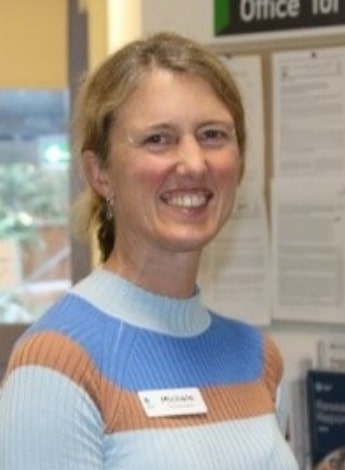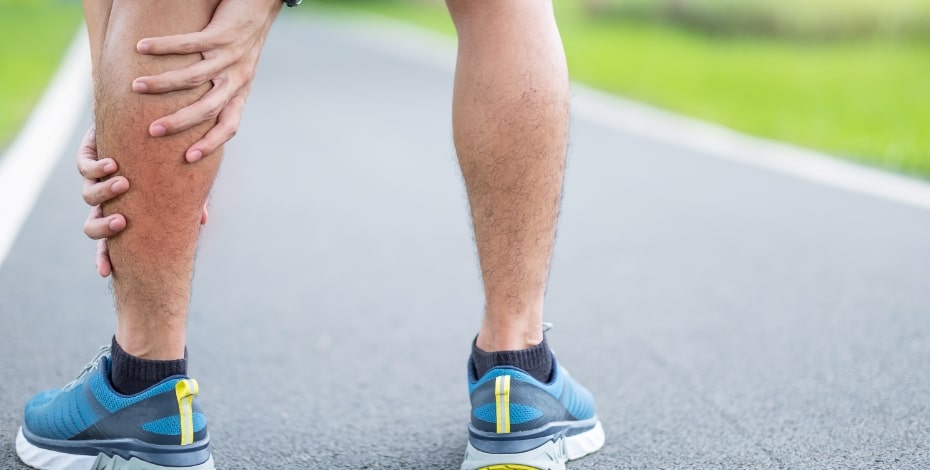
Young-onset Parkinson's disease

Physiotherapist Michele Callisaya and neurologist David Blacker were both diagnosed with young-onset Parkinson’s disease. Here they offer personal perspectives on living with this disease, informed by their professional knowledge and experience.
Our aim is to raise awareness of young-onset Parkinson’s disease and to provide a call to action for physiotherapists and neurologists to work together from the time of diagnosis.
We will use our personal stories to demonstrate some of the symptoms of young-onset Parkinson’s disease and why coordinated physiotherapy and medical management is essential to optimising function and wellbeing.
Almost 200,000 people live with Parkinson’s disease (PD) in Australia (Fight Parkinson’s 2022).
If asked to picture a person with PD, most people imagine a stooped old white man with a tremor and a shuffling gait.
It is time to change that image (Armstrong & Okun 2020).
Our ages at diagnosis and our presenting symptoms did not match the stereotypes.
Few people realise the wide range of possible presenting symptoms or that 20 per cent of people with PD are of working age (Deloitte Access Economics 2015) and 10 per cent are 50 years old or under (Armstrong & Okun 2020).
Michele's diagnosis

Physiotherapist Michele Callisaya did not initially recognise the symptoms of Parkinson's disease in herself, in part due to its early onset.
It was two years from the first motor symptom to diagnosis.
At the age of 48, I experienced tightness of the left calf and painful clenching of the toes (dystonia) when trail running, enough to bring me to a standstill.
This was initially on long runs and only downhill.
Over a number of months, it progressed until it was occurring on the flat after 20 minutes and eventually on longer walks.
Although not a common symptom, dystonia is more likely to be found in young-onset Parkinson’s disease (Riboldi et al 2022).
The initial presenting symptoms of PD can vary enormously and may include non-motor symptoms such as constipation, loss of smell, fatigue, depression and REM sleep behaviour disorder (Bloem et al 2021).
Soon I started developing crawling sensations in my lower legs at rest but never in a dermatomal pattern.
I saw a physiotherapist, a neurologist and a sports physician.
I completed numerous tests including a full spine MRI, a brain MRI and nerve and muscle conduction studies, which were all normal.
Over the course of two years the symptoms continued to progress.
I felt rotated to the left when walking (left-sided bradykinesia) and my left hip (adductors and internal rotators) and shoulder (internal rotators) were stiff.
I noted weakness in my hip extensors, abductors and external rotators (perhaps from my new walking pattern and stiffness).
Despite having worked in neurological rehabilitation for most of my career, I didn’t initially think of PD due to my age.
I started having trouble typing (I thought I was working too hard in my research job).
My left arm movements were slower and I’d occasionally miss accurately picking up a cup.
Perhaps it was multiple sclerosis?
My left arm stopped swinging (noticed by my good friend, a geriatrician) and rapid alternating arm and finger movements got smaller and smaller.
The ‘icing on the cake’ was a left-sided tremor.
I went back to see the same neurologist who suspected PD and was referred to a movement disorder specialist, who made the diagnosis based on my symptoms and trial of levodopa—two years after my initial symptoms.
David's diagnosis

Neurologist David Blacker deferred getting a diagnosis of Parkinson's disease due to fears he was imagining his symptoms.
My first symptoms, in my early 40s, were also of an exercise-induced dystonia.
It was in my right foot and initially occurred only in the second half of marathon-length runs.
For a while, I could ‘stave it off’ by reducing my running speed and consciously focusing on maintaining good posture.
After a few years, though, in a very similar way to Michele’s description, the dystonia appeared on shorter runs and even when walking.
It was more than five years before other classic PD symptoms emerged.
These included right limb slowness, uncomfortable rigidity and occasional tremor when stressed.
My handwriting was becoming more difficult and I could see the change over time when looking at my patient notes.
It eventually became apparent that some of my PD patients were moving more freely than I was. I deferred seeing a colleague for a while for several reasons.
I worried I might have been imagining symptoms and feared being a hypochondriac.
I wanted to be quite sure of the diagnosis and chose to delay assessment until both my sons finished their last year of high school.
I received the diagnosis and commenced dopamine replacement in 2018.
Since then, I have been very open about it, including publishing my experiences and giving talks.
I’ve come to regard my situation as being an opportunity to demonstrate that one can still live an active and fulfilling life with PD.
It has provided me with detailed insights that I frequently share with patients in the hope that it will make their journey with PD easier.
Perspectives of physiotherapy and exercise
Michele
Before being diagnosed and starting medication, I began stretching and strengthening my hip and shoulder muscles, cycling and instinctually doing cross-body movements like boxing, which all made noticeable improvements.
I now do a mix of aerobic, resistance/power, agility and balance training.
Unfortunately, I have spoken to too many people with PD who are not told about the benefit of physiotherapy and exercise at the time of diagnosis.
Rather, they are referred to physiotherapy only when significant mobility impairment or falls occur, usually many years after diagnosis.
It’s increasingly recognised that there is disability even in the early stages of PD (Ellis et al 2021).
Exercise has multiple benefits, including slowing progression of symptoms (Ernst et al 2023) and potentially the disease (Johansson et al 2022)— a strong motivator.
Getting into exercise routines early is likely to improve longer term adherence.
Under-recognised non-motor symptoms such as depression, fatigue, poor sleep and apathy need to be recognised by physiotherapists—exercise may help with many of them (Folkerts et al 2023).
I certainly find high intensity workouts beneficial, not only for motor symptoms but also for sleep and mood.
Physiotherapists have the skills to tailor exercises, to assess barriers and motivators, to help their patients set goals and to use other behavioural change strategies for successful long-term exercise participation.
People with PD are less physically active than those without PD at the time of diagnosis (Ellis et al 2021).
I had significantly reduced the amount of exercise I was doing over the two-year period before diagnosis.
Once diagnosed and on Madopar, I was able to run short distances but still noticed slight leg stiffness and slowness that got worse after about 15–20 minutes.
I attended a PD-specific exercise class (also great for peer and social support) and realised that I had lost a significant amount of power in my left leg, affecting my ability to hop and run.
I was able to work on this and with the help of a small amount of extra medication 30 minutes before running, I can now run reasonable distances.
This has an enormous positive effect on my mood.
David
Soon after I realised that I was developing PD, I plunged deep into the scientific literature, seeking to learn what I could about ways to possibly slow down progression.
The leading intervention was—and still is—exercise.
I had long been interested in exercise for the treatment of neurological conditions and was a visiting consultant neurologist to the Royal Perth Rehabilitation Hospital for about 10 years.
Watching patients with stroke and other conditions work intensively with the allied health team and make incredible gains has always been a very satisfying component of my career.
Well before ‘neuroplasticity’ became ‘fashionable’, I was aware of data showing that even modest exercise can actually increase the volume of specific regions of the human brain.
My personal challenge was to reshape my exercise program in the face of my PD symptoms, which were limiting my running—my main form of exercise.
Instead of long runs, I did short, brisk walks, often using hand weights with exaggerated arm swinging.
I started to work more on core strength and balance and began to do various forms of yoga several times per week.
I’ve been an avid golfer for almost 50 years now and I’ve continued to play, making various different modifications to my swing and putting in order to cope with reduced speed and tremor.
The most beneficial exercise for me has been non-contact boxing.
In collaboration with a former champion boxer, a team of exercise scientists and a neurological physiotherapist, I lead the FIGHT-PD (Feasibility of Instigating Graduated High-intensity Training in PD) study.
How can physiotherapists and neurologists work together?
A multidisciplinary approach from the time of diagnosis is recommended.
Here we outline ways that a neurologist, a physiotherapist and the person with PD might work together to get the best functional outcomes.
A physiotherapist might identify subtle changes (like a reduction in muscle power) or medication off periods that are affecting the person’s ability to do physical activity.
The neurologist can then work with the patient to tailor medication and reduce the risk of musculoskeletal injury when exercising.
Michele
'I could not run first thing in the morning due to dystonia.
'Even later in the day, left-sided stiffness and poverty of movement would return after 30 minutes of running due to medication wearing off.
'Simply knowing to wait 40 minutes for the medication to kick in and asking my neurologist if I could take a small amount of extra levodopa before or during a run helped enormously.’
David
'When patients ask about treatment for PD, I emphasise that exercise is crucial and the most promising intervention so far that might slow progression.
'Experts have recommended early commencement and optimisation of dopamine replacement in order to improve symptoms but also maximise the ability to exercise.
'While many physicians now follow the ‘exercise is medicine’ philosophy, very few have the training and knowledge to prescribe an exercise program.
'This is where collaboration with a physiotherapist who has specialty PD training as well as an exercise physiologist is essential for the best results.
'I arrange this for most of my PD patients and give them the excellent infographic published in 2021 by the Parkinson’s Foundation and the American College of Sports Medicine (Figure 1).
'This provides an outline for duration, intensity and frequency of exercise.
'A flexible program can change the combination of these if necessary to compensate for the specific deficits of PD or injuries as they arise.
'The MDS-UPDRS [Movement Disorder Society Unified Parkinson’s Disease Rating Scale] used by neurologists may not be sensitive enough to measure symptoms that occur during higher intensity activities.'
Physiotherapists can play an important role in identifying appropriate outcome measures specific to patients’ goals, picking up more subtle changes in symptoms, implementing early treatment rather than allowing a decline in function and communicating symptom changes to the neurologist for medication review.
Michele
'In collaboration with my physiotherapist, I’ve set up a range of outcome measures (such as distance hopped on each leg and a six-minute run) specific to my level of function, fitness and goals that we will measure every six months.
'I hope that this will pick up issues earlier rather than waiting for them to be found as part of the UPDRS.'
Symptoms can vary not only from day to day, but also from hour to hour and tracking symptoms outside of the clinic can help neurologists tailor medication timing.
There are a number of devices that can now track dyskinesia, tremor and slowness of movement.
Physiotherapists could help set up tracking to assist the neurologist to make decisions about treatment.
The prescription of exercise and physiotherapy by the neurologist carries weight and can be given the same importance as medication.
This can really help motivate the patient to see exercise as an essential and ongoing part of managing symptoms.
Language and words are important and giving a patient something positive they can do to take control can be extremely powerful.
The physiotherapist can then reinforce this by prescribing personalised and adequately dosed programs.
As clinicians ourselves, with knowledge of the healthcare system, we have a unique advantage in being able to access information and support.
Many people with PD don’t consult experienced physiotherapists because of low self-efficacy, lack of knowledge about the benefits of exercise, symptoms such as apathy or cognitive issues, lack of available specialist professionals, not being referred or high cost (Zaman et al 2021).
However, most states have rehabilitation centres with physiotherapists who can provide guidance.
State Parkinson’s peak bodies can provide information about the condition and about local services and supports, including physiotherapy and peer support options.
Some state organisations also have resources for professionals.
Fight Parkinson’s in Victoria, for example, offers a community of practice for physiotherapists.
A call to action
The UK’s National Institute for Health and Care Excellence guideline for PD and the World Health Organization’s Package of interventions for rehabilitation recommend early referral to physiotherapy (National Institute for Health and Care Excellence 2017, World Health Organization 2023).
In the absence of Australian guidelines, the physiotherapy profession in Australia will need to raise awareness and advocate to funding bodies and our medical colleagues, emphasising the importance of physiotherapy from the time of diagnosis to ensure the best possible outcomes for people with Parkinson’s disease (Ellis et al 2021).
Quick links:
>> Associate Professor Michele Callisaya APAM is an academic physiotherapist at Monash University and the University of Tasmania. Michele worked for over 20 years in inpatient and community rehabilitation. Her research focuses on early motor biomarkers of dementia, the interplay between cognition and physical function in relation to falls, and ways to improve access to allied health for people living with dementia.
>> Dr David Blacker AM is the Perron Institute’s medical director and a clinical neurologist who specialises in the diagnosis and management of stroke. David leads the clinic alongside nursing and allied health staff and is pleased to assist his long-term colleague Professor Graeme Hankey to build a stroke centre of excellence. David received recognition as a Member of the Order of Australia (AM) in the King’s Birthday 2023 Honours for services to medicine and neurological research.
© Copyright 2023 by Australian Physiotherapy Association. All rights reserved.





